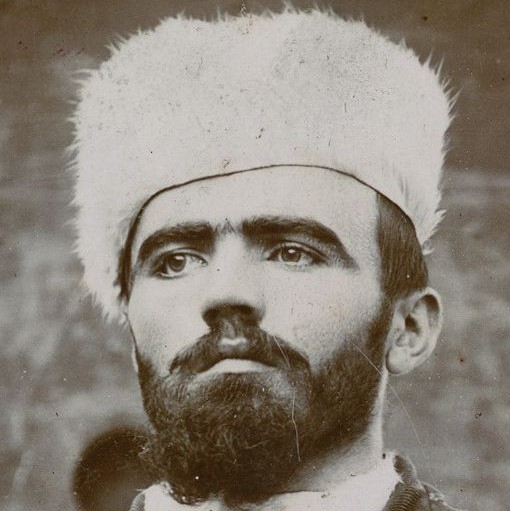
1869 - 1898
Joseph Vacher
Summary
Name:
Nickname:
The French Ripper / The South-East Ripper / The Killer of ShepherdsYears Active:
1894 - 1897Birth:
November 16, 1869Status:
ExecutedClass:
Serial KillerVictims:
11+Method:
Stabbing / Disembowelment / Mutilation / StabbingDeath:
December 31, 1898Nationality:
France
1869 - 1898
Joseph Vacher
Summary: Serial Killer
Name:
Joseph VacherNickname:
The French Ripper / The South-East Ripper / The Killer of ShepherdsStatus:
ExecutedVictims:
11+Method:
Stabbing / Disembowelment / Mutilation / StabbingNationality:
FranceBirth:
November 16, 1869Death:
December 31, 1898Years Active:
1894 - 1897Date Convicted:
October 28, 1898bio
Joseph Vacher was born on November 16, 1869, in the rural commune of Beaufort, France. He was the 15th of 16 children in a poverty-stricken, devoutly Catholic farming family. His father, Pierre Vacher, was 59 at the time of Joseph’s birth, and his mother, Rosalie Ravit, was 44. Joseph’s early life was marred by trauma and emotional instability. His twin brother, Eugène, choked to death in infancy.
Even as a child, Vacher showed signs of uncontrollable rage and violence. He once shot at neighborhood boys with his father’s rifle for mocking him, and on another occasion, he attempted to strangle his younger brother for not working fast enough. At 14, he was suspected of raping and murdering a 10-year-old boy, though no charges were filed.
Vacher’s adolescence was unstable. He was sent to live with a half-sister and placed in a strict religious boarding school run by the Marist Brothers, where he was noted for cruelty to animals and compulsive masturbation. He was expelled after two years. During this time, he contracted syphilis, which led to the surgical removal of one testicle. His mental health further deteriorated, and he began displaying signs of delusion and paranoia.
By 1888, Vacher had attempted to rape a 12-year-old boy. He confessed this to his brother Auguste in Geneva, who refused to house him.
murder story
Joseph Vacher’s killing spree began almost immediately after his release from the Saint-Robert asylum on April 1, 1894, when he had convinced doctors he had recovered from mental illness. In reality, Vacher was far from cured. Over the next three years, he drifted across southeastern France, begging, taking short-term jobs, and most notably, targeting vulnerable young people in rural areas. Many of his victims were shepherds or young farm workers alone in isolated fields. He often approached them under the guise of needing help or food, then attacked without warning.
The victims were not only murdered but often raped, both before and after death, and disemboweled with excessive violence. Vacher typically used knives and other sharp instruments, mutilating faces and genitals, stabbing repeatedly, and in many cases leaving the bodies in shocking conditions. He frequently desecrated corpses and expressed disturbing justifications for his acts.
Despite the brutality, local law enforcement failed to connect the killings for years. Many of the murders were treated as isolated crimes, and in some towns, innocent people were arrested and falsely accused. Vacher used this to his advantage, crisscrossing departments and assuming new identities. He dressed in ragged military fatigues, wore a disfigured face from a failed suicide attempt, and carried an accordion, giving him a distinctive but misleading appearance. He claimed he had served with the Zouaves—a French light infantry corps—and often used this claim to gain sympathy or deflect suspicion.
Authorities confirmed Vacher's involvement in 11 murders, all with similar patterns: isolated victims, rural areas, excessive stabbing, sexual assault, and post-mortem mutilation.
Each murder revealed a consistency in Vacher's approach—sudden ambushes, sexual assaults, and mutilations. His victims, regardless of age or gender, were chosen for their isolation. He raped young boys and girls alike, and even targeted elderly women and men, showing little concern for victim profile beyond opportunity.
Joseph Vacher’s downfall came on 4 August 1897 in Champis, where he attempted to assault Marie Héraud, a mother of three collecting wood. She resisted, and her screams brought her husband, Séraphin Plantier, and several neighbors who subdued Vacher. While in temporary custody, he ranted, threatened, and made disturbing statements about his belief in having rights over women. At one point he said: “I need young girls, shepherdesses or cowgirls.”
He was arrested for attempted rape and sentenced to a short prison term for indecency. However, Judge Émile Fourquet, who had been investigating similar murders across the region, saw a pattern. He suspected Vacher was the elusive "Killer of Shepherds" and requested Vacher be transferred to Prison Saint-Paul for interrogation.
While being transported by train, Vacher briefly escaped but was recaptured. Soon after, on October 7, 1897, he began confessing first to eight murders, then to eleven. His confessions were delivered with cold detachment and even flashes of pride. He claimed he committed the murders “in a moment of rage".
Vacher attempted to plead insanity, arguing that a rabid dog bite, quack treatment, and divine visions had caused him to lose control. He also blamed his facial deformity, the result of a failed suicide attempt, for driving him to hate society. However, his behavior during confinement and confession undermined his defense. Forensic experts, including Dr. Alexandre Lacassagne, declared him mentally sane and fully responsible for his actions.
On October 28, 1898, the court convicted him of murder. After a brief outburst in prison in January 1898 where he assaulted a guard, Vacher remained detained under heavy supervision until his execution by guillotine on 31 December 1898, at 7:03 a.m. in Bourg-en-Bresse. Witnesses say he refused to walk to the scaffold and had to be dragged to his death. A crowd of over 3,000 gathered to watch.
While only 11 murders were confirmed, dozens more remain strongly suspected. Vacher was tied to at least 35 additional murders, 12 attempted murders, and several rapes or disappearances through circumstantial evidence, location matching, or victim profiles. He often used aliases and moved quickly, making it difficult for investigators to build airtight cases.